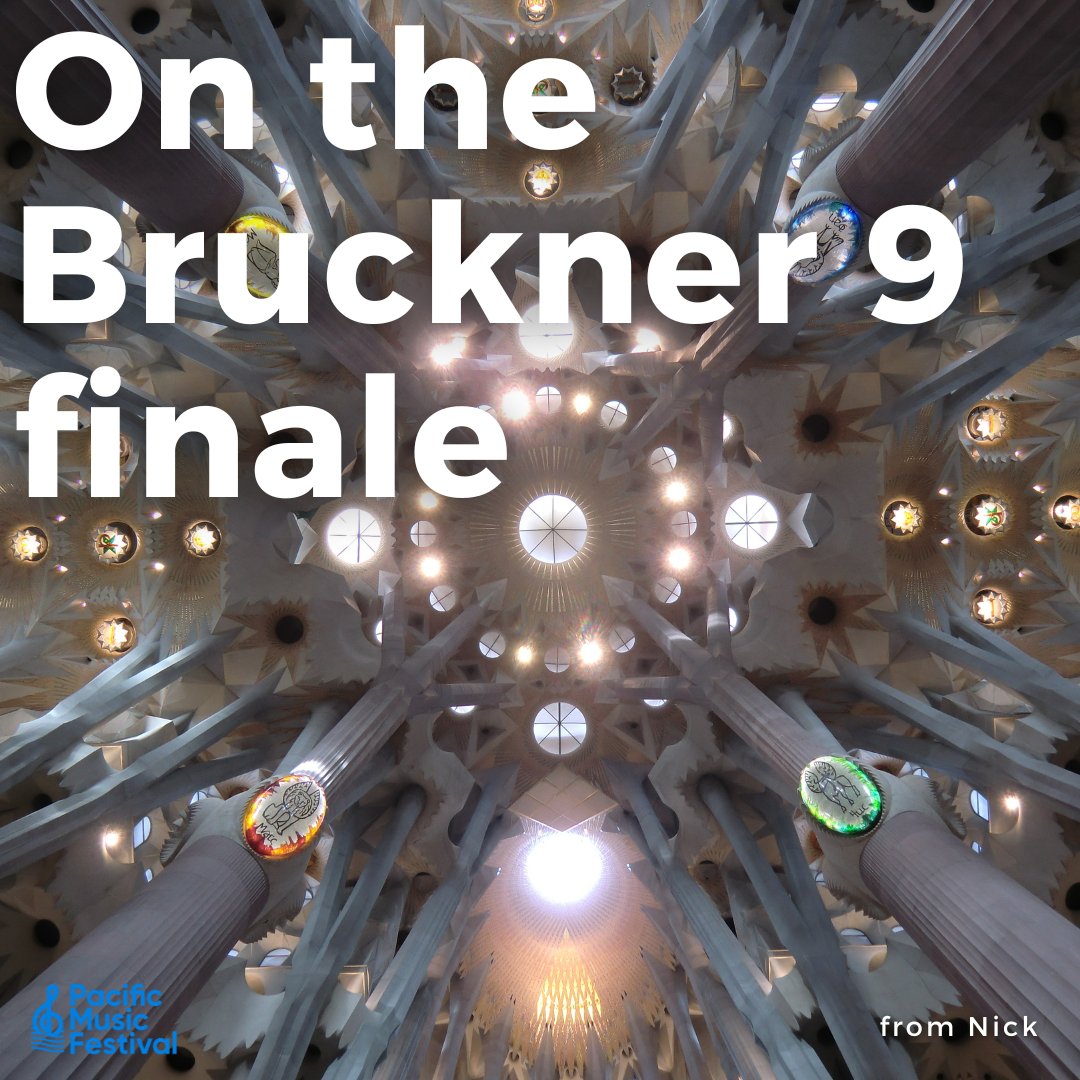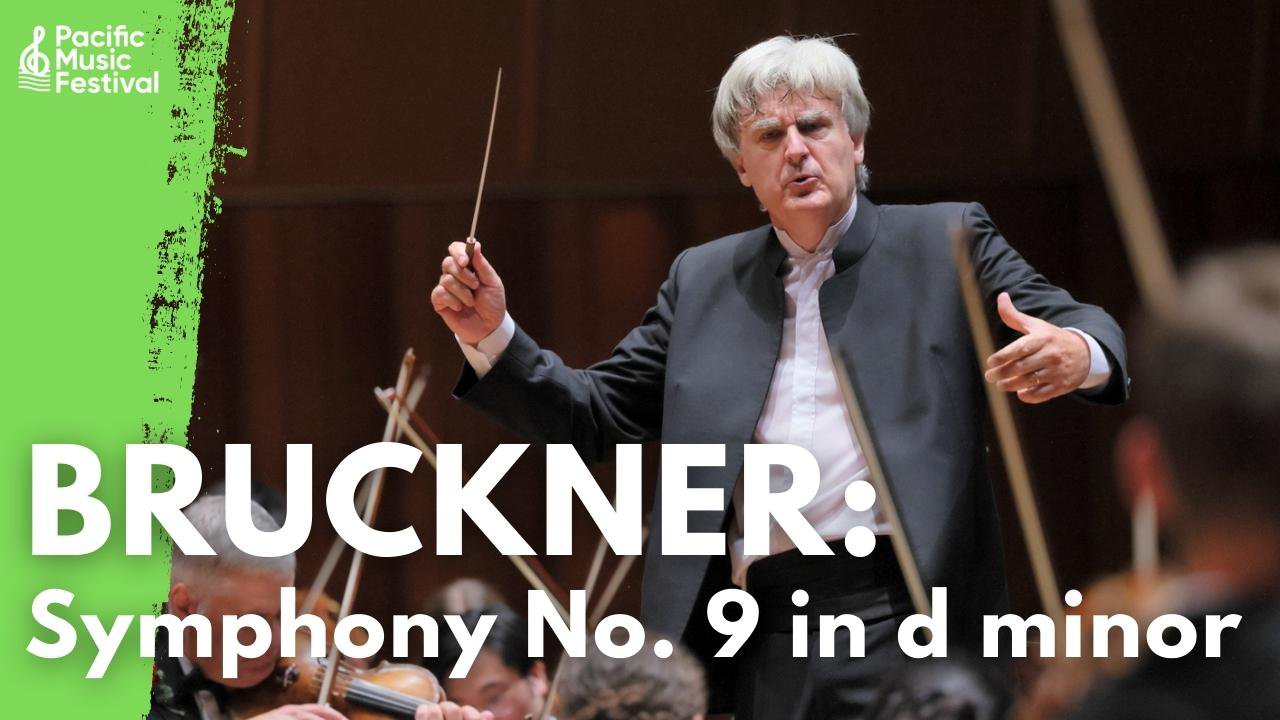ニックによるエッセイ [from Nick] を公開しました。未完成作品について語る第2回は、昨年PMFオーケストラが挑んだブルックナーの交響曲第9番の第4楽章について語ります。 ※英文のみ
☆第4楽章補完版の演奏動画を配信中です♪
Symphony No. 9 with fourth movement completion [PMF 2023]

At Bruckner’s death, the finale of his 9th symphony was thankfully close to the “complete” end of the spectrum I laid out in my previous post, On presenting unfinished works. But it was still so far from complete that the version performed at PMF 2023 required 30 years of work by 4 specialists, with further revisions by the conductor in the months leading up to the performance. Bruckner died a celebrity in 1896 and his music has been in demand consistently ever since. Yet for much of our 2023 audience, this was the first time they had heard the finale of Bruckner’s grand musical testament.
And the hard work of fine-tuning is still ongoing! As I type, the Japan premiere of a further-revised edition is just days away, to be performed by the Tokyo Metropolitan Symphony Orchestra.
____________________
Bruckner 9 has most commonly been performed either with some other music functioning as a finale, or just without a finale. The latter happens to work well, because even with just the first 3 movements it’s close to an hour of music, and it takes you on an expansive journey, from the grandiose through the nightmarish and on to the meditative. The end of the 3rd movement carries you peacefully into the heavens. It turns out that audiences don’t mind stopping there.
I too have sometimes wished that time would just stop right there. That is the blessing/curse of the 3-movement version. A journey that rewarding, ending somewhere that beautiful, can take the urgency out of figuring out how to go any further. This lack of urgency may have contributed to the finale remaining so unknown. But the main reason it remained unknown was a century-long stream of bad info and criticism. Trying to describe the manuscripts is hard – there are book-length descriptions of their condition – but saying “they are indecipherable” is easy, and that info spreads. And the culture of criticizing any attempt to make a completion, aimed at protecting the integrity of the music, is surprisingly well intended! But I have to imagine that it dissuaded many people from even trying.
So the 3-movement version is conceptually simple to present to an audience (“these 3 movements are the portion Bruckner completed”), it has an established performance history, it avoids all controversy, and it is a genuinely satisfying experience. Why work so much harder to present the finale?
Because it’s shocking material. It yanks you back down from the heavens and drags you through the mud. It has a jagged quality that feels ahead of its time, at moments akin to music that would come decades after Bruckner’s death. I also get the sense that it’s quite personal. It knows fear. It changes the journey of the piece, and its destination, exploring new territory as it sets up a catharsis. It is unlike anything else he wrote, adding a new depth not only to this symphony, but to his output overall. I hear all of Bruckner's music differently after coming to know this finale.
____________________
Thinking about whether it’s possible, and then whether it’s a good idea, to attempt a completion of this finale, one good question is “what percentage of it did Bruckner finish?” A conservative answer is “about two thirds,” but we can’t measure the whole precisely, and there are several levels of “finished.” The majority of the movement’s flow is in place, maybe the case for 75% is possible? The editors of the most recent SPCM edition write that only 87 of the 649 measures of their completion required “forensic” restoration, which means that 86.6% did not, but of course lighter restoration was required elsewhere. Here’s a broad description of the materials: some sections were already fully orchestrated, “complete.” Others had the notes in place but were yet to be orchestrated (some of these, at first glance, look like organ music). Other sections had only a single-line melody. There are lots of separate sketches (these proved vital to the SPCM completion). That was the unfortunate “natural” state of the materials at Bruckner’s death. Then there was an outrage; on news of his death, some of the pages were stolen from his home. So there are a few gaps. We just have to accept that those pages are gone forever.
So how does reconstruction work? One important thing is that Bruckner made frequent use of patterns, and there are segments of the finale where patterns have been set up but not carried out. Knowing a lot about those patterns would allow the expert, to some extent, to fill those segments in. I assume that some of the single-melody pages were exactly this kind of shorthand, on which Bruckner could fill in the patterns later. Reconstruction in this case might be like seeing an incomplete mosaic, analyzing the tiling to discover patterns, and using those patterns to tile the rest. There are also larger-scale patterns* in Bruckner’s manuscript that can serve to flesh out fragmentary segments. Instead of mosaic tiling, now zoom out and think of that iconic fragmented outer wall of the Colosseum in Rome. We naturally imagine how the patterns played out in the original structure. With some micro- and macro-patterns determined, you can imagine being able to project certain layers of material even into gaps, in architecture and in music.
*structural and harmonic. Music nerds: after listening to this finale, go listen Bruckner’s final motet ‘Vexilla regis’ (1892) and check out how the harmonic structure sounds really familiar.
Goethe called architecture “frozen music.” The parallel feels helpful here. Imagine a building left two-thirds complete at the death of its architect. You might appreciate the building’s structure just from its finished sections, or even from its exposed frame. Maybe in this form it could become an attraction for connoisseurs, architects might study it. But to the general public it would remain obscure. And no one could go inside and have an experience like what was intended. It wouldn’t function as a building. Completion would require lots of careful detail work, not everything would be obvious. Fidelity to the design would have to haunt every move. Should it be completed? What percentage of completeness would you consider necessary?
Imagine if visionary architect Antoni Gaudí had left a massive-scale work, comparable to nothing else, about two-thirds complete at his death. Would you consider it a worthy task to find a way for the public to experience it, to ensure that it didn’t fall into obscurity? Two thirds would sure be enough to keep me curious! It’s a trick question though, because the Sagrada Família was estimated to be less than 25% complete at Gaudí’s death (conservative estimates are much lower). To its unfortunate “natural” state at that point, add the outrage that some of its designs were then destroyed by war. Its completion has been complicated and slow. Construction was just beginning when Bruckner finished the first 3 movements of his 9th symphony, and now 130+ years on, it is almost complete! I hope the comparison to the Bruckner is apt. Fortunately for history, the drive toward curiosity has won out with the Sagrada Família.
That kind of curiosity is a healthy impulse when exploring music. The strongest stance in my experience is to both hold on tightly to questions about the integrity of a piece or its performance, and yet to still have the full experience it offers, openly, without fear. See how that goes, then return to your questions. Life is better this way. With the Bruckner 9 finale in particular, in light of the integrity of the SPCM completion, the unmatched dedication of the scholars behind it – embraced by Sir Simon Rattle, recorded by the Berlin Phil, performed now internationally – you can just let your curiosity take over. What you stand to gain is truly special.

